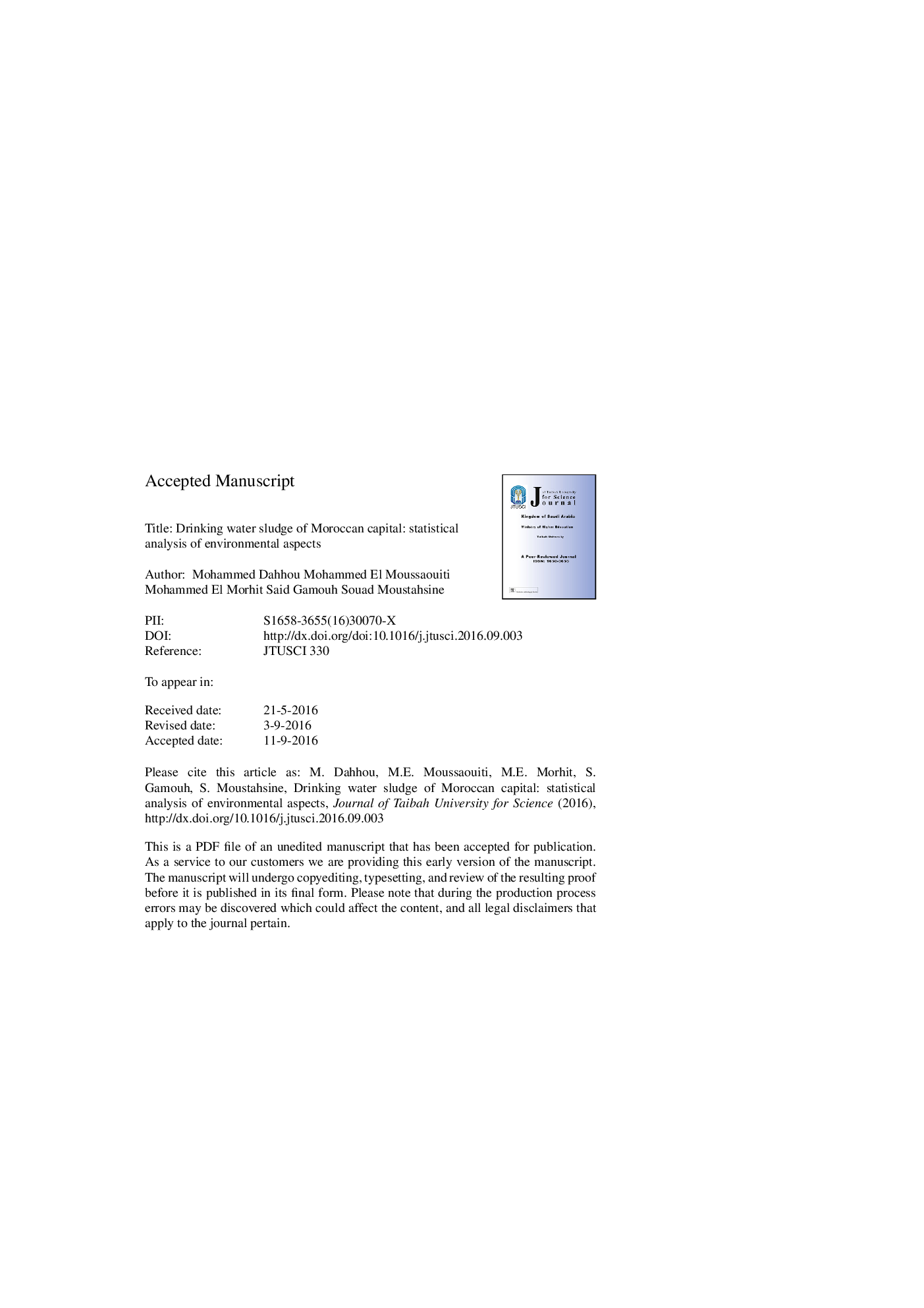| Article ID | Journal | Published Year | Pages | File Type |
|---|---|---|---|---|
| 5143486 | Journal of Taibah University for Science | 2017 | 21 Pages |
Abstract
This paper uses a statistical approach to evaluate the degree of metal pollution, trace element concentrations, and seasonal evolutions of various physicochemical parameters of Moroccan drinking water sludge. Principal component analysis (PCA) was used to analyze these physicochemical parameters (including water temperature (Tw), volatile suspended solids (VSS), and suspended matter (SM)) in liquid raw sludge, the conductivity (Cond(s) and pH(s)) in addition to the trace element content of the supernatant (e.g., Cd(s), Pb(s), Cr(s)), pH and heavy metal and trace element contents (e.g., Pb, Cr, Cd, Fe, Al, Cu, Zn, P, N, K and C) in dried hydroxide sludge. The measured quantities of Cd and Cr in the supernatant did not exceed their recommended limits in wastewater treated for irrigation; however, the amount of Zn, Pb and Cu measured in dried hydroxide sludge exceeded their limits as defined by international standards. PCA reveals that the principal component F1 indicates that 25.20% of all variance can be mostly attributed to Zn content and conductivity, while the principal component F2 demonstrates that 21.00% of all variance is likely caused by the previously mentioned physicochemical parameters, most significantly C and pH(s). Finally, this paper analyses the merits of this analytical approach and discusses its important applications for solving crucial environmental issues.
Keywords
Related Topics
Physical Sciences and Engineering
Chemistry
Chemistry (General)
Authors
Mohammed Dahhou, Mohammed El Moussaouiti, Mohammed El Morhit, Said Gamouh, Souad Moustahsine,
